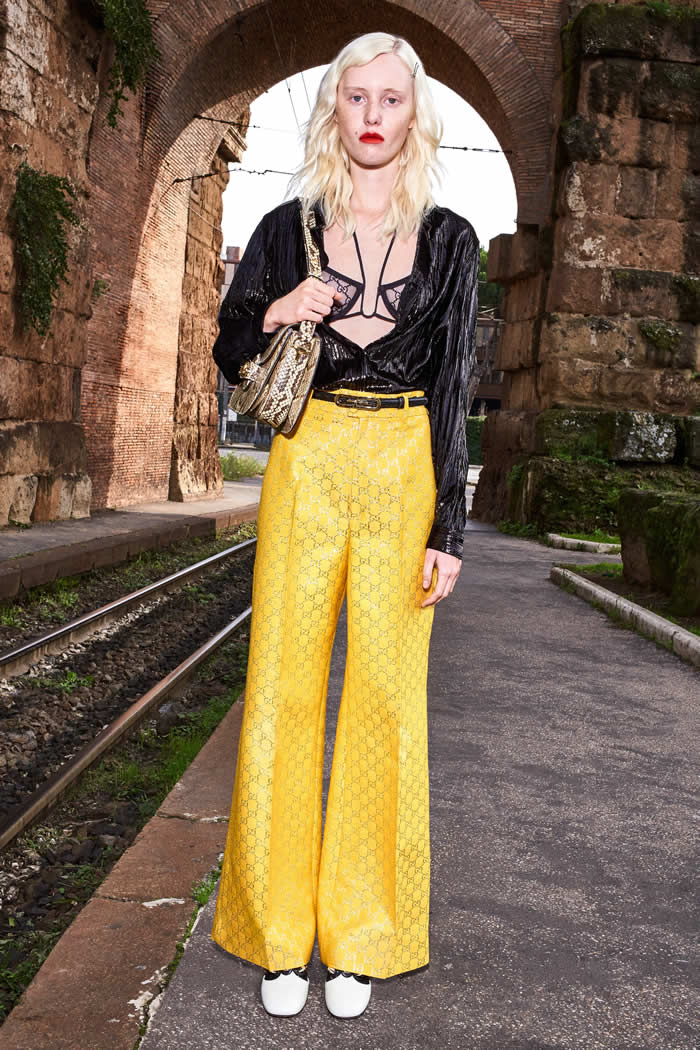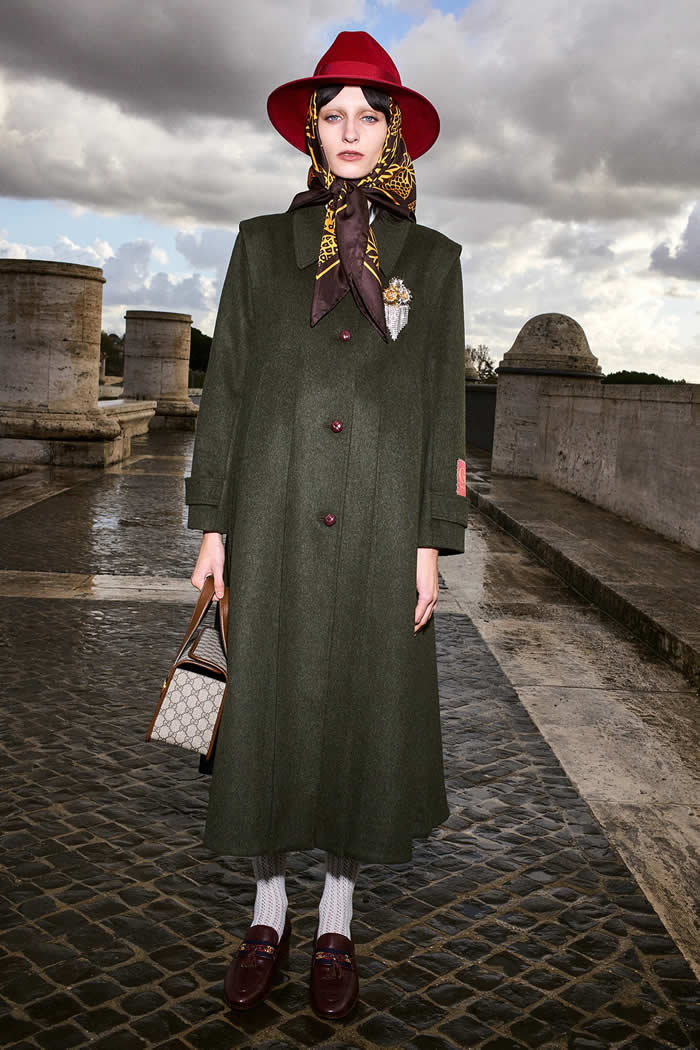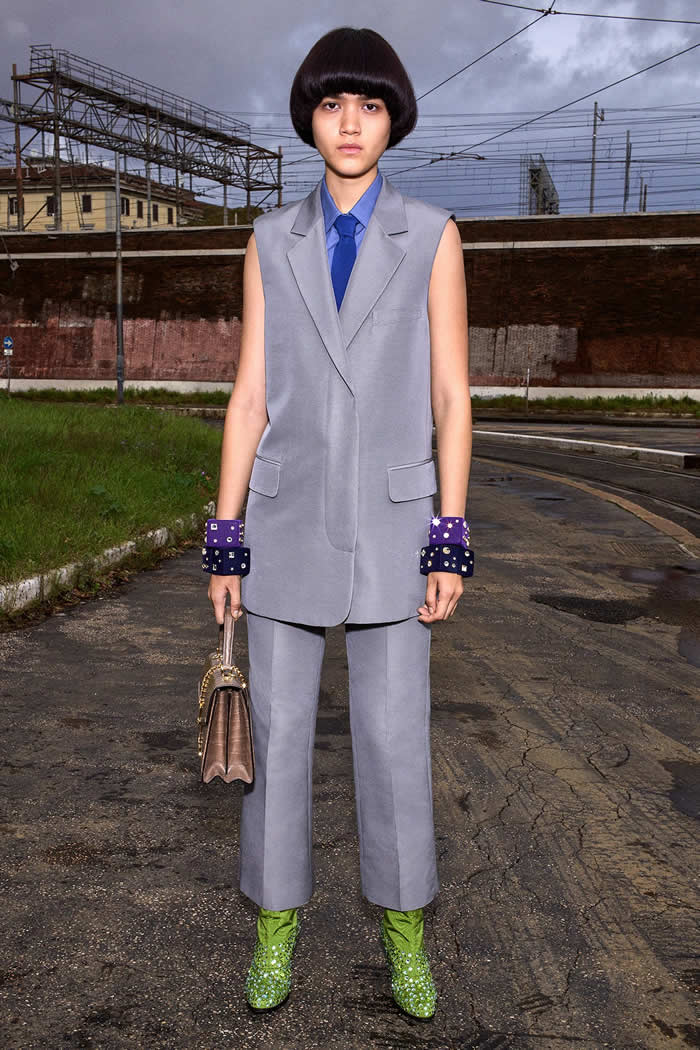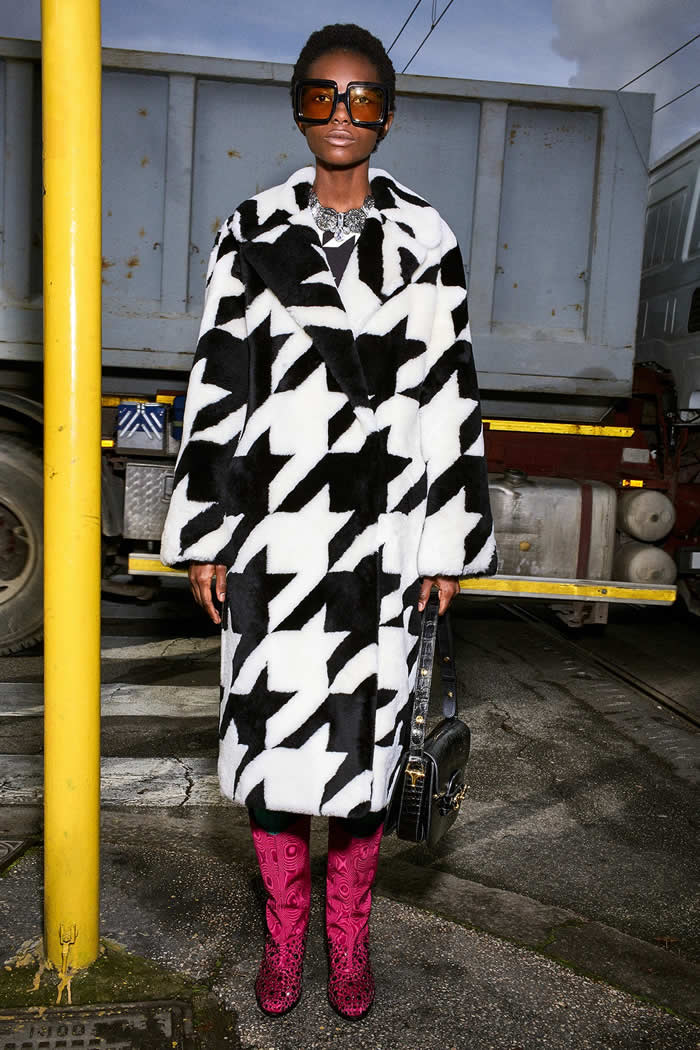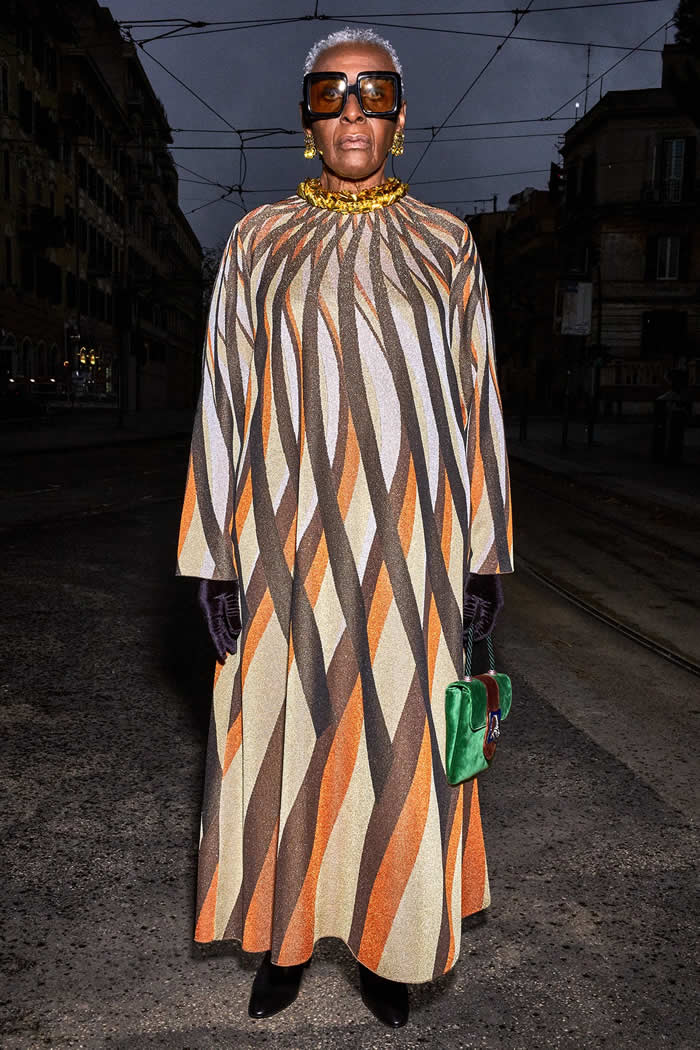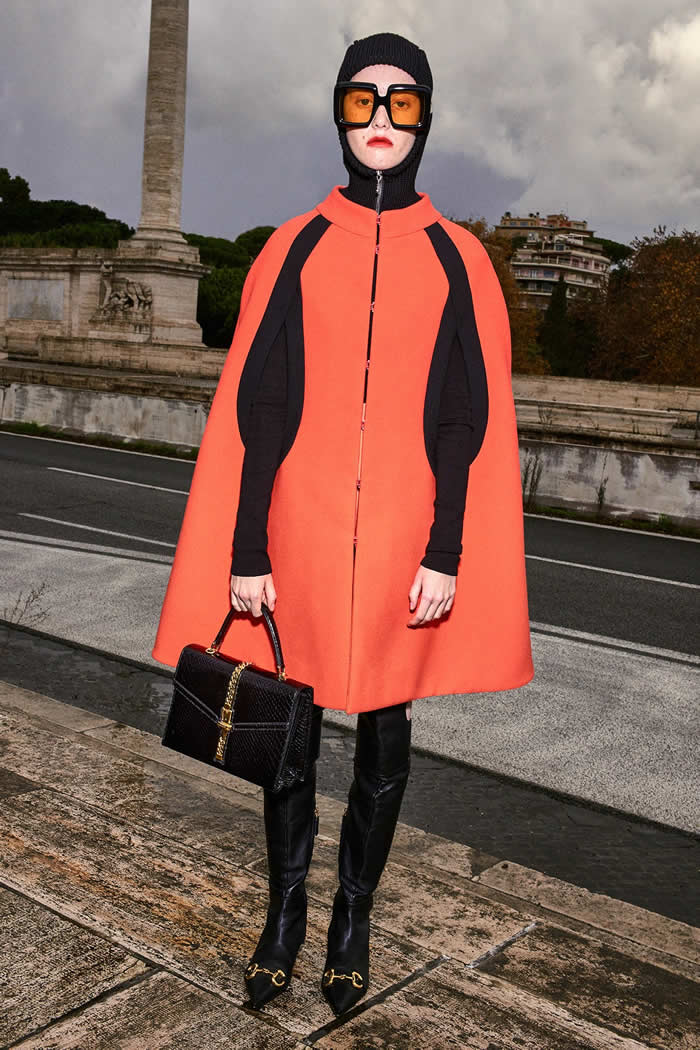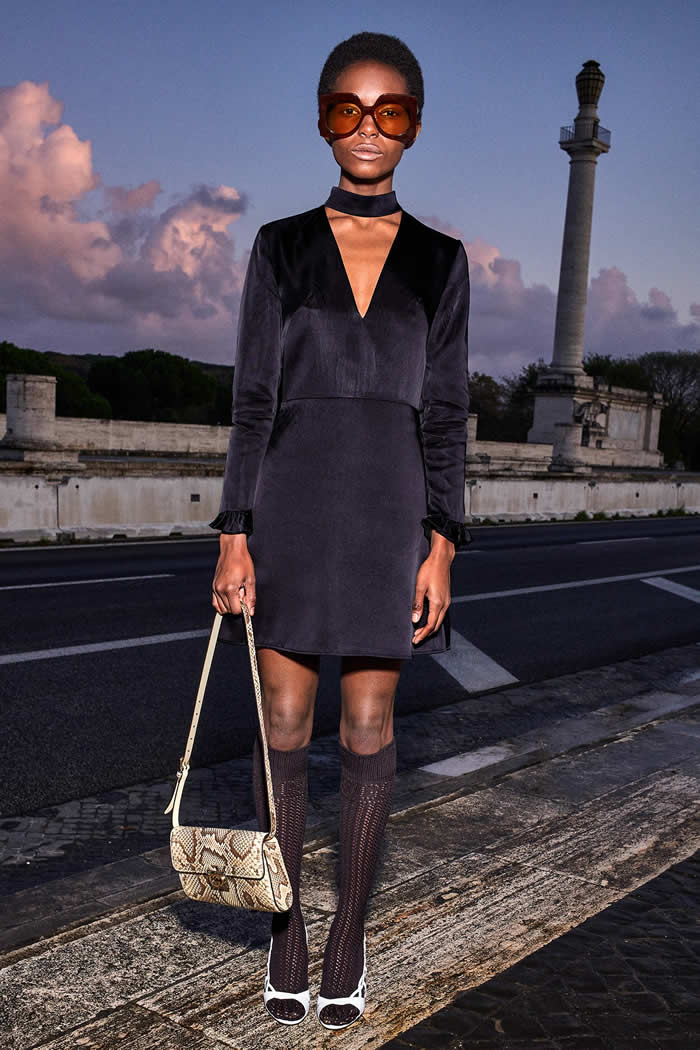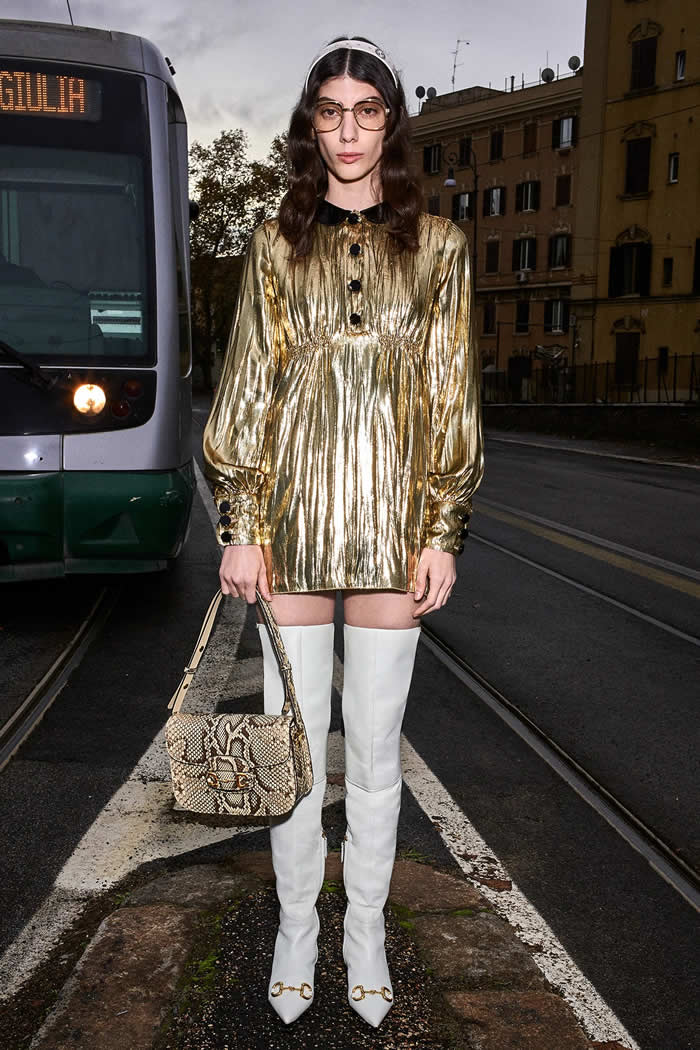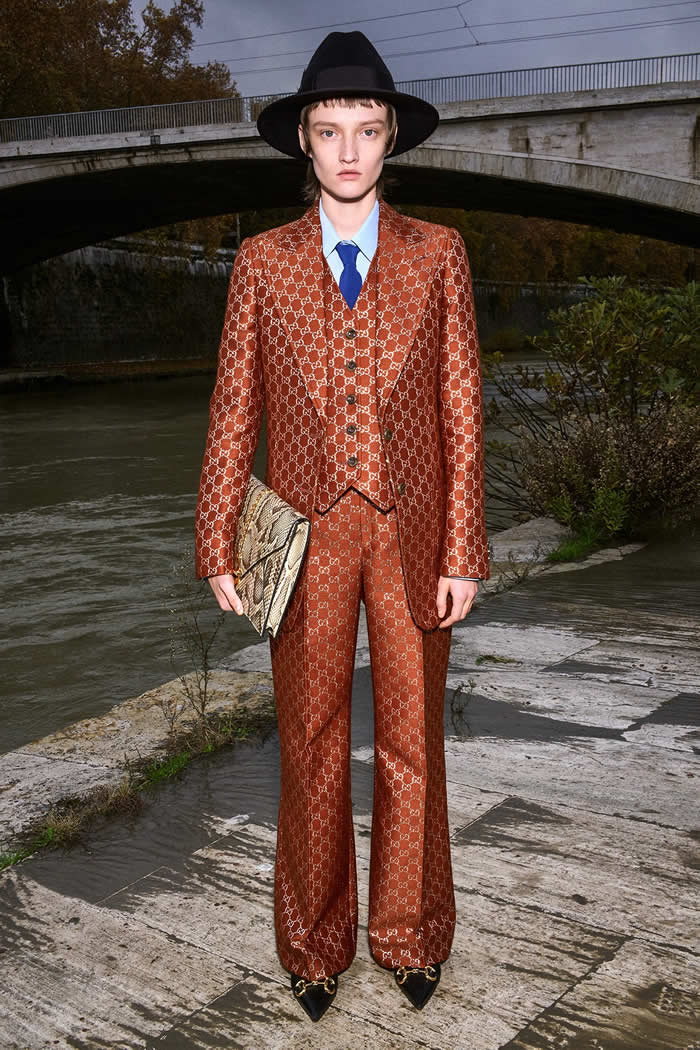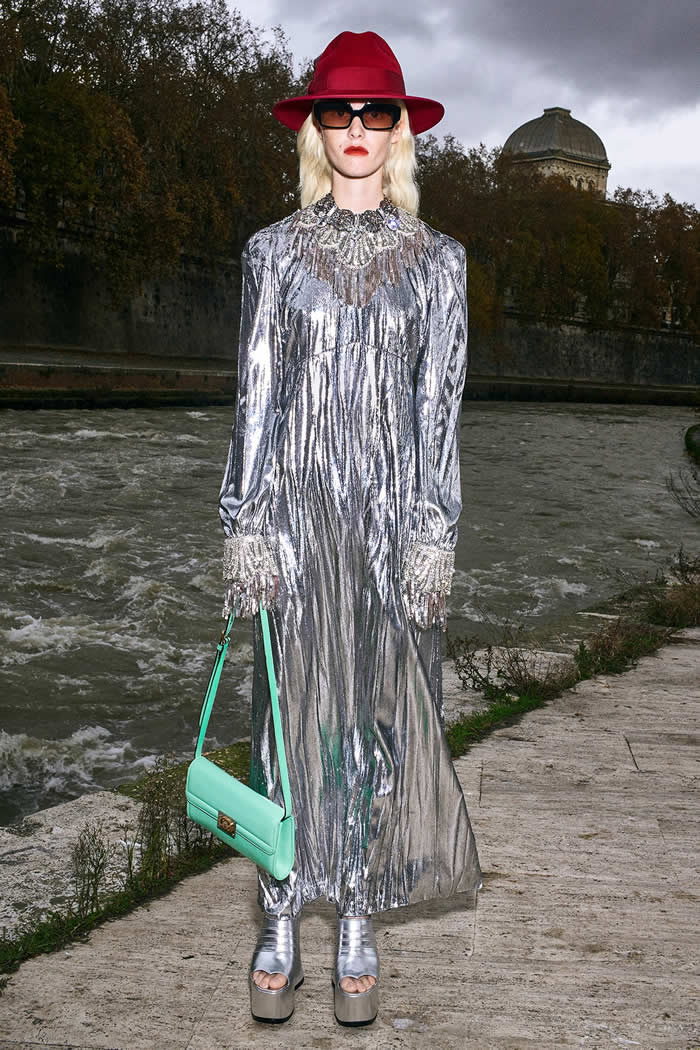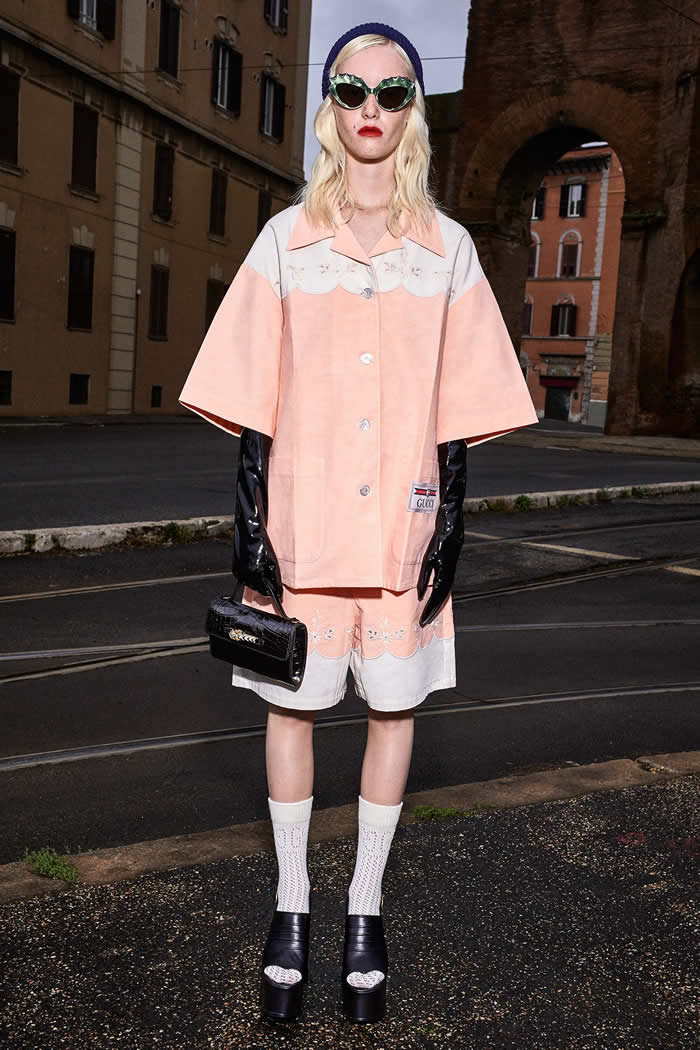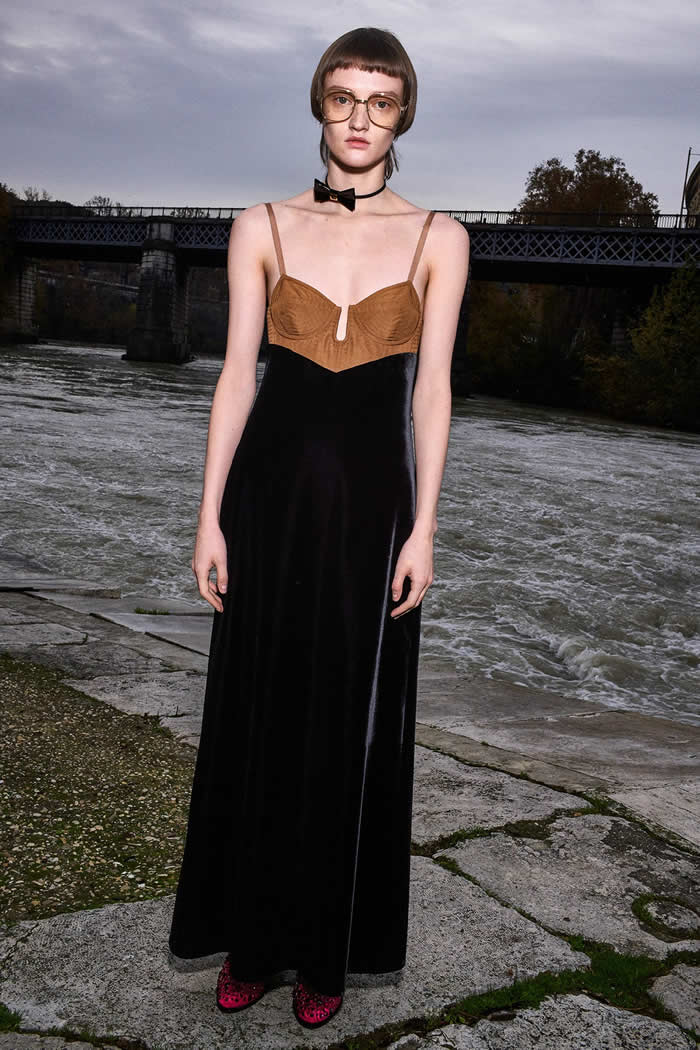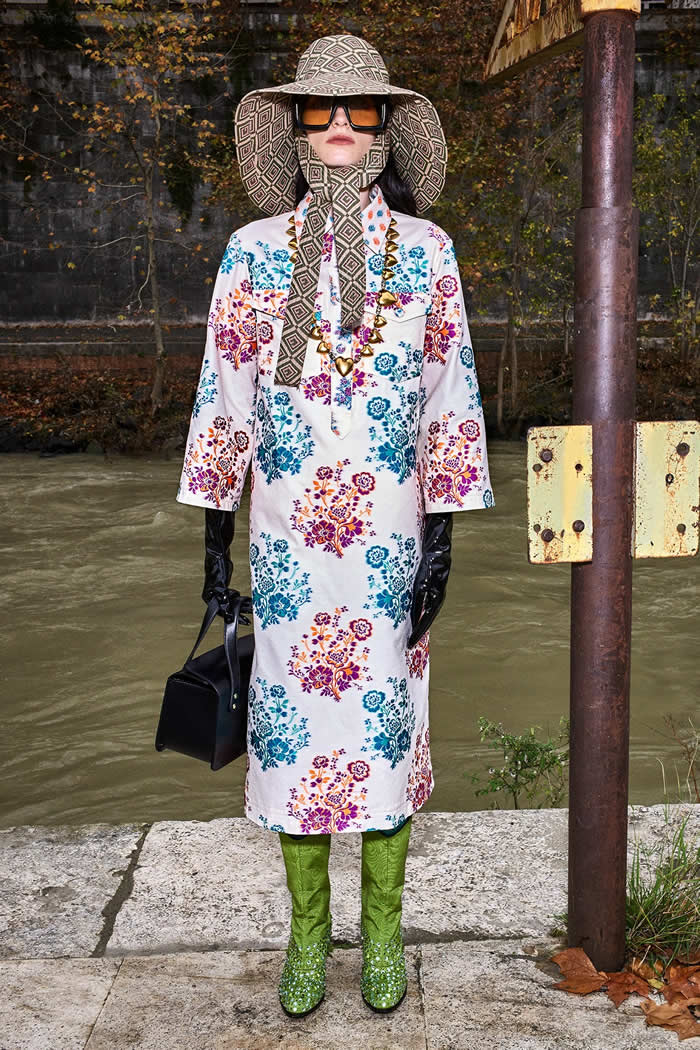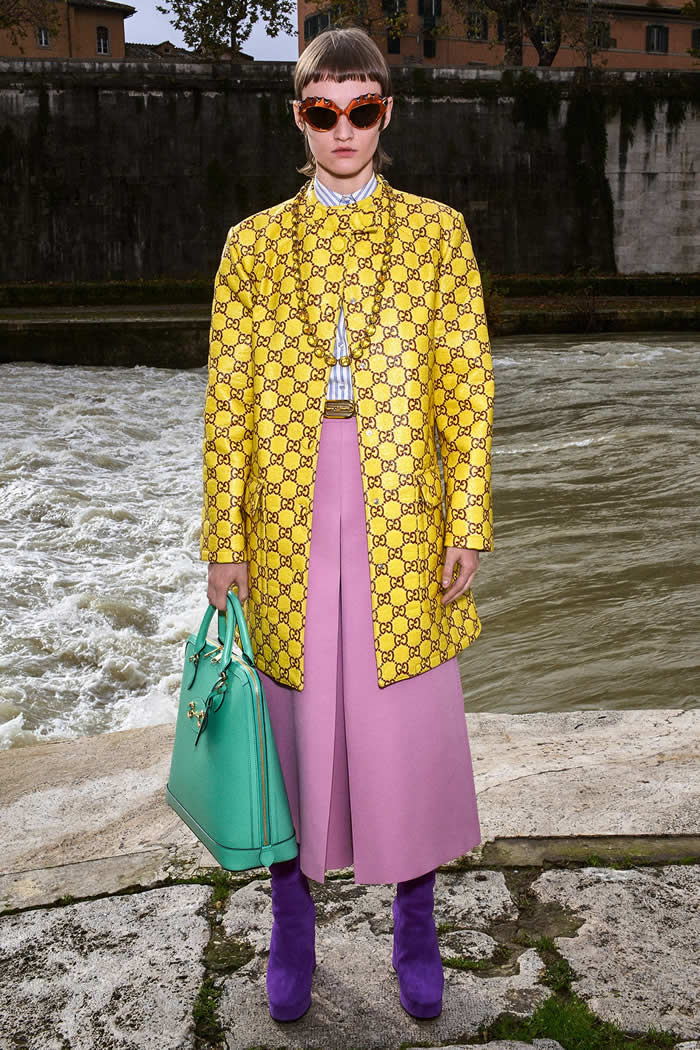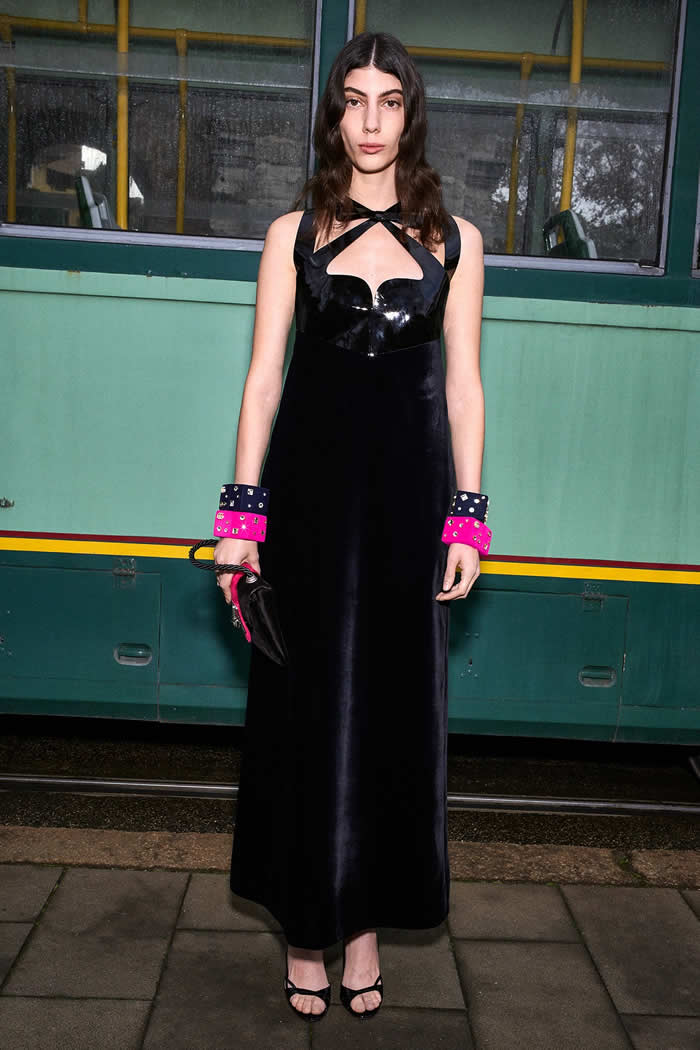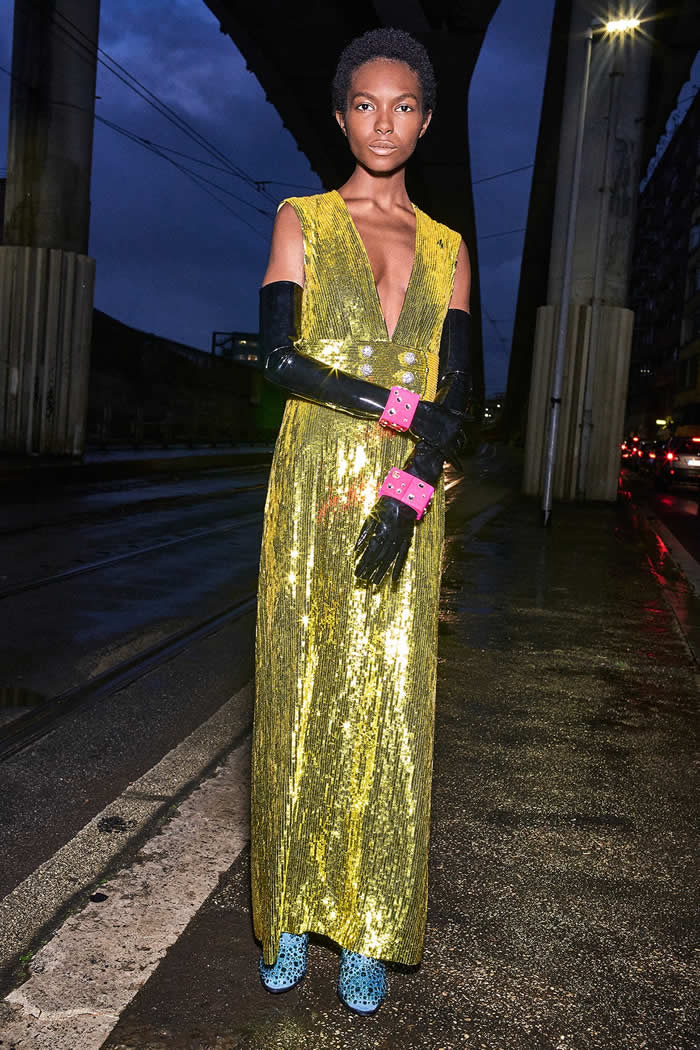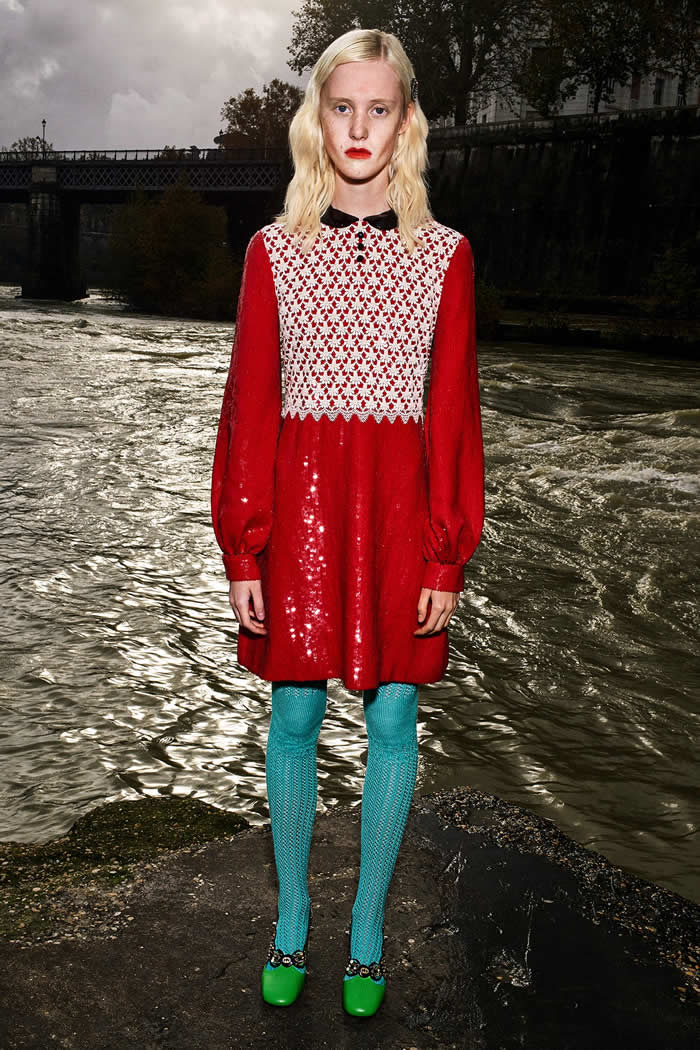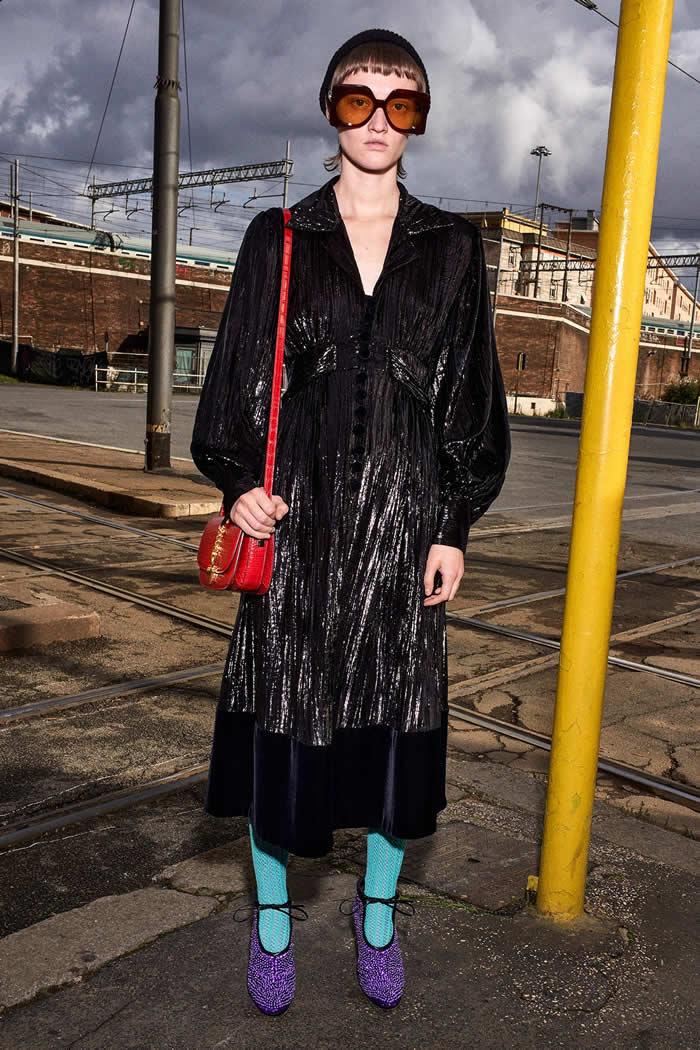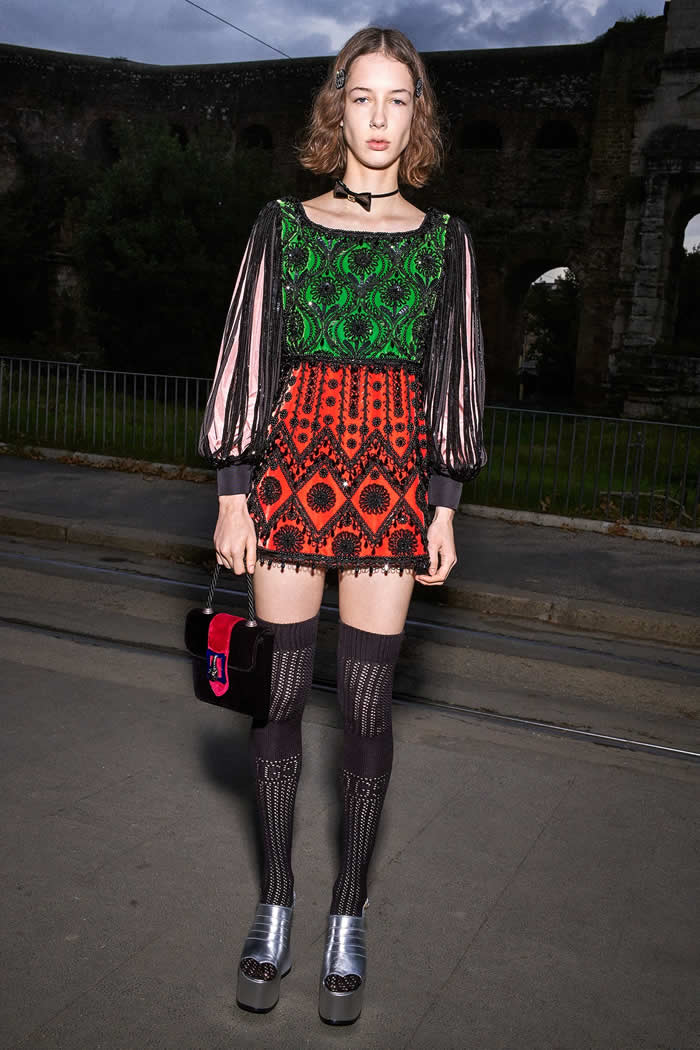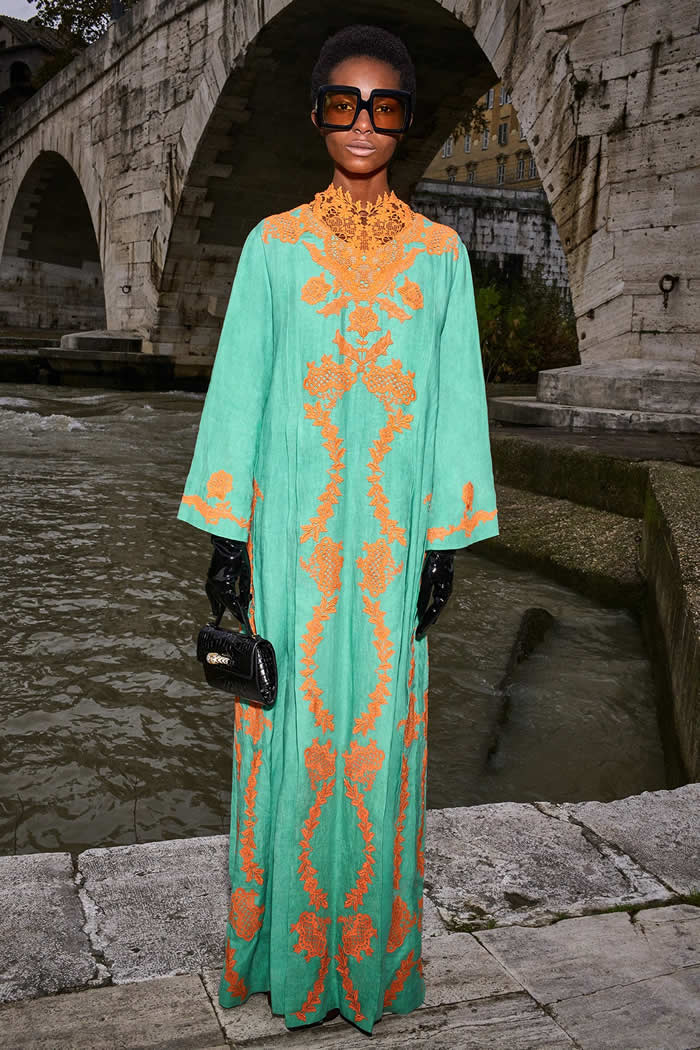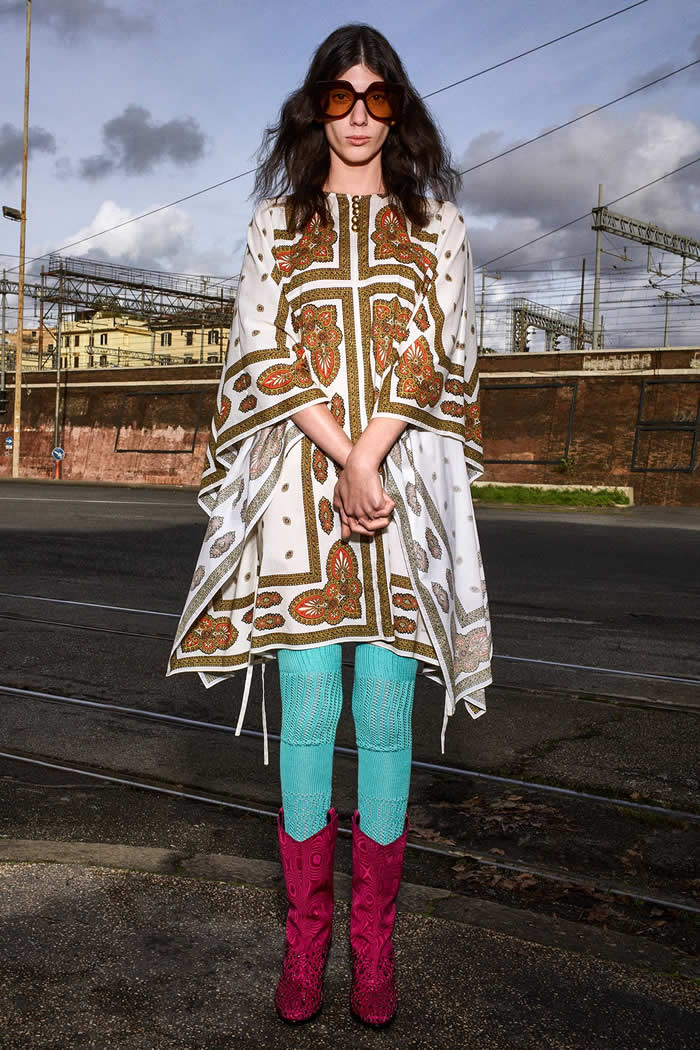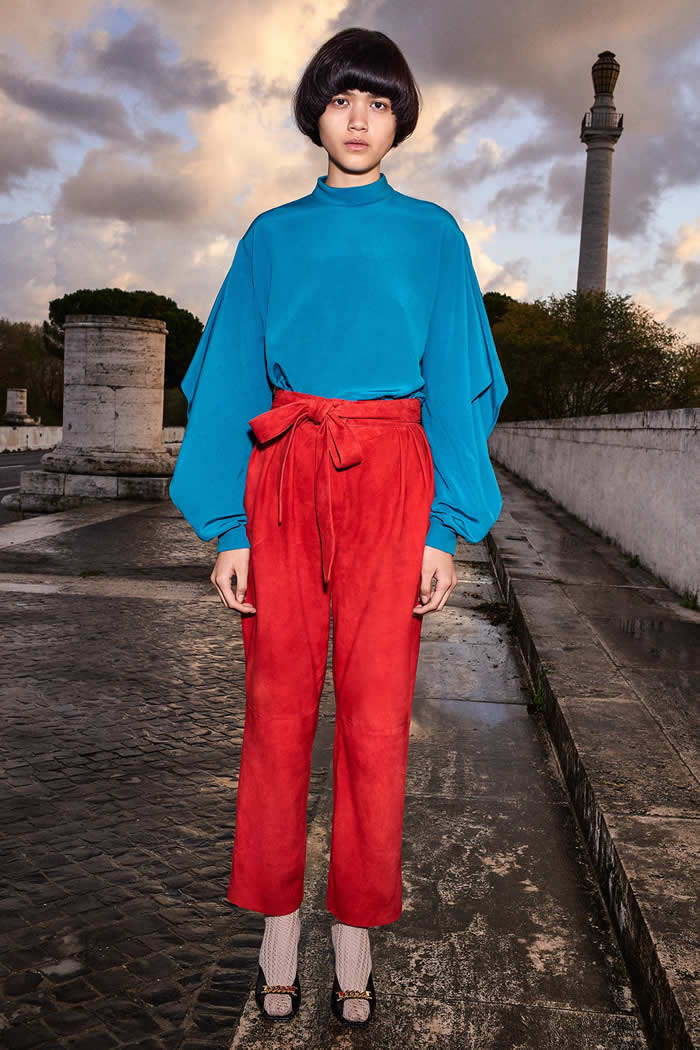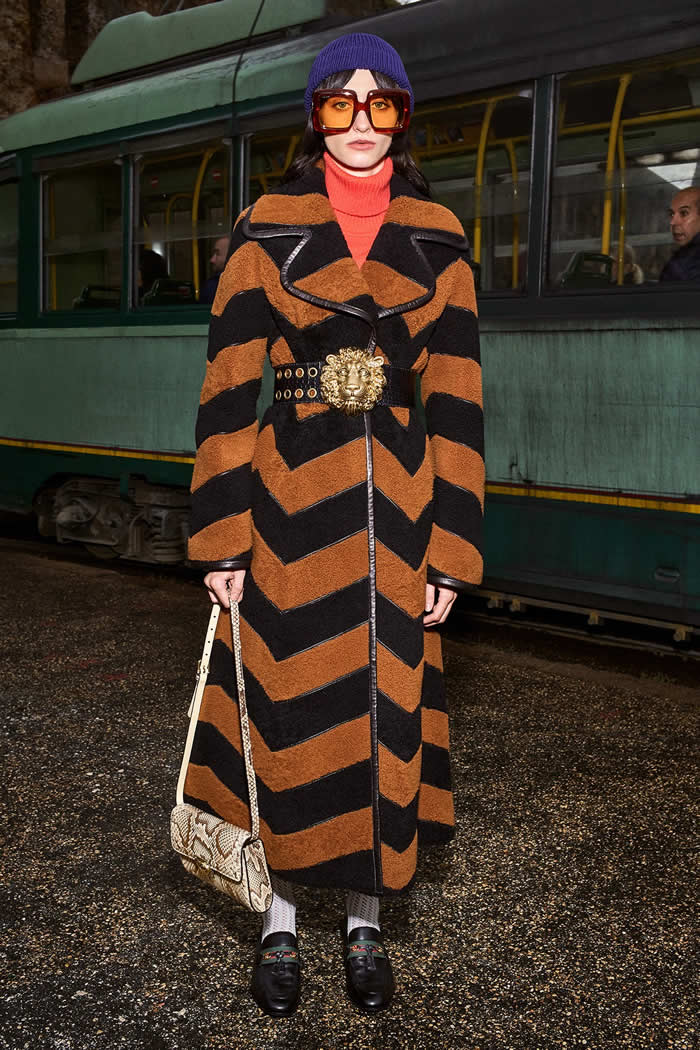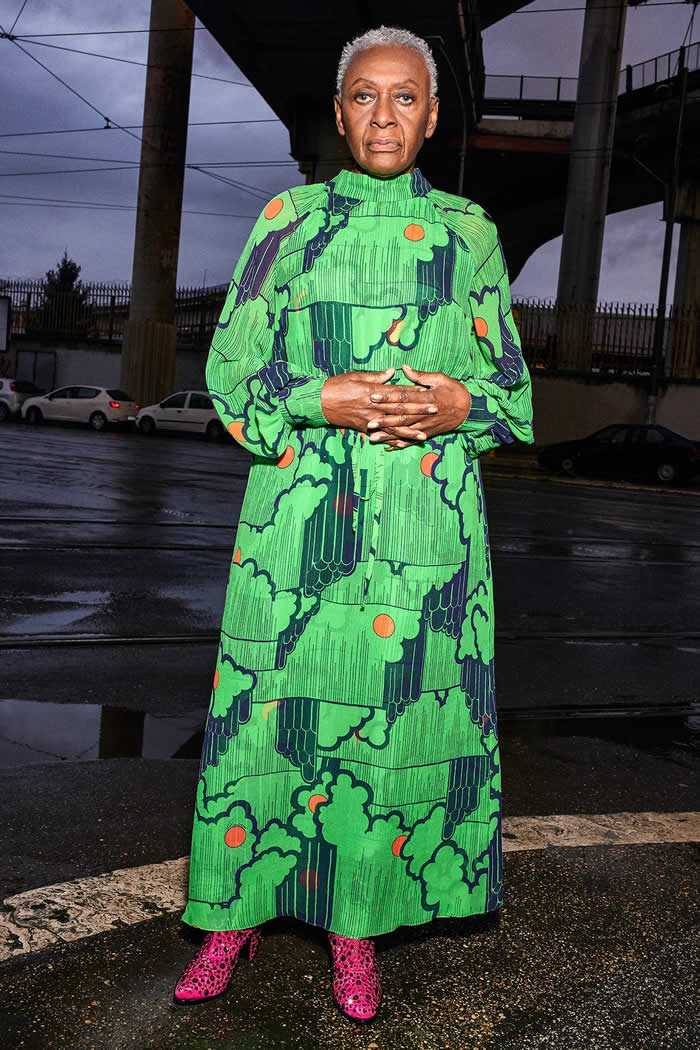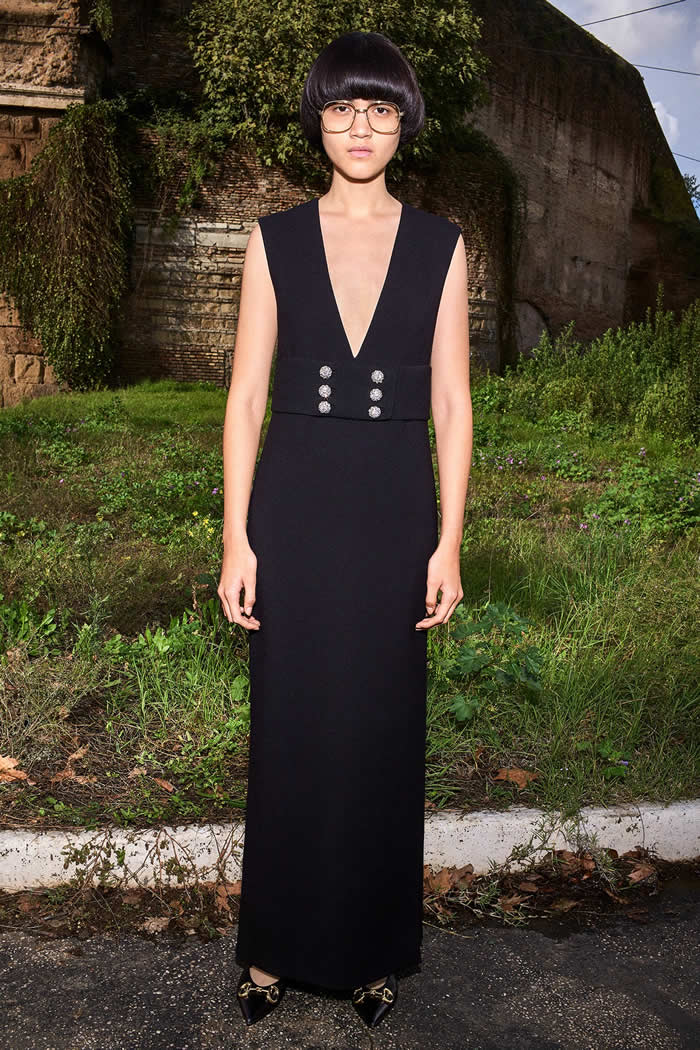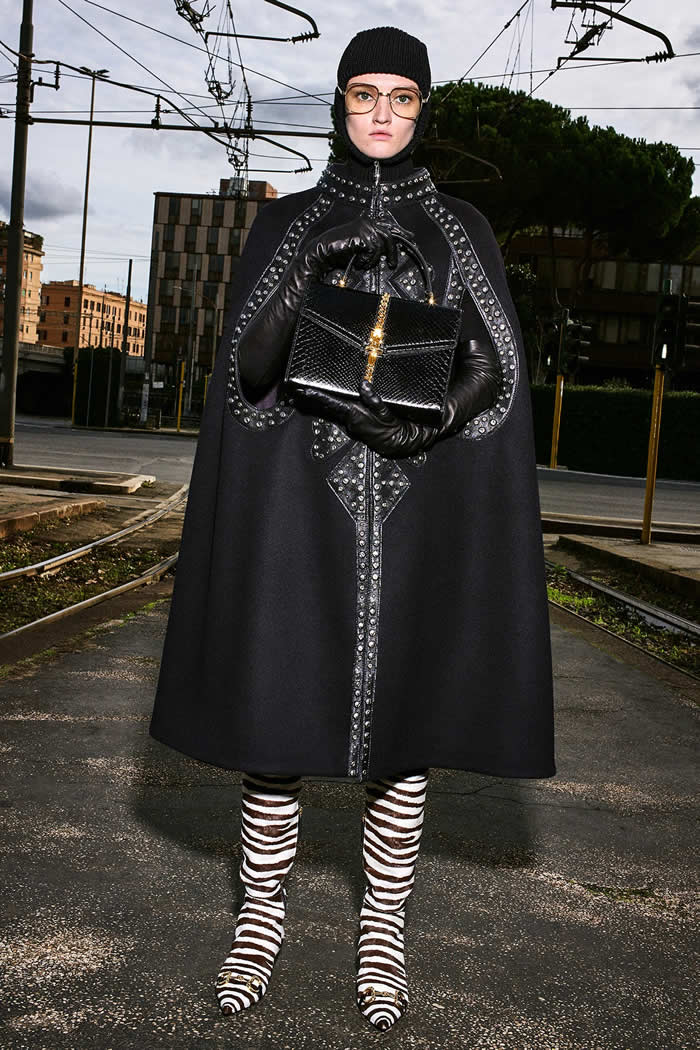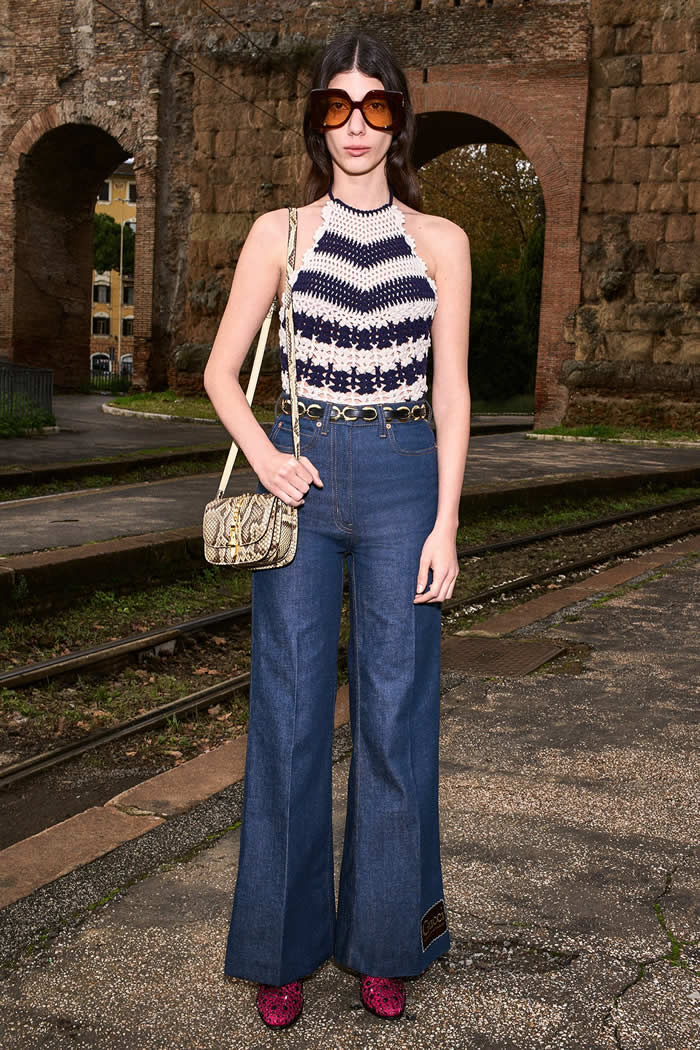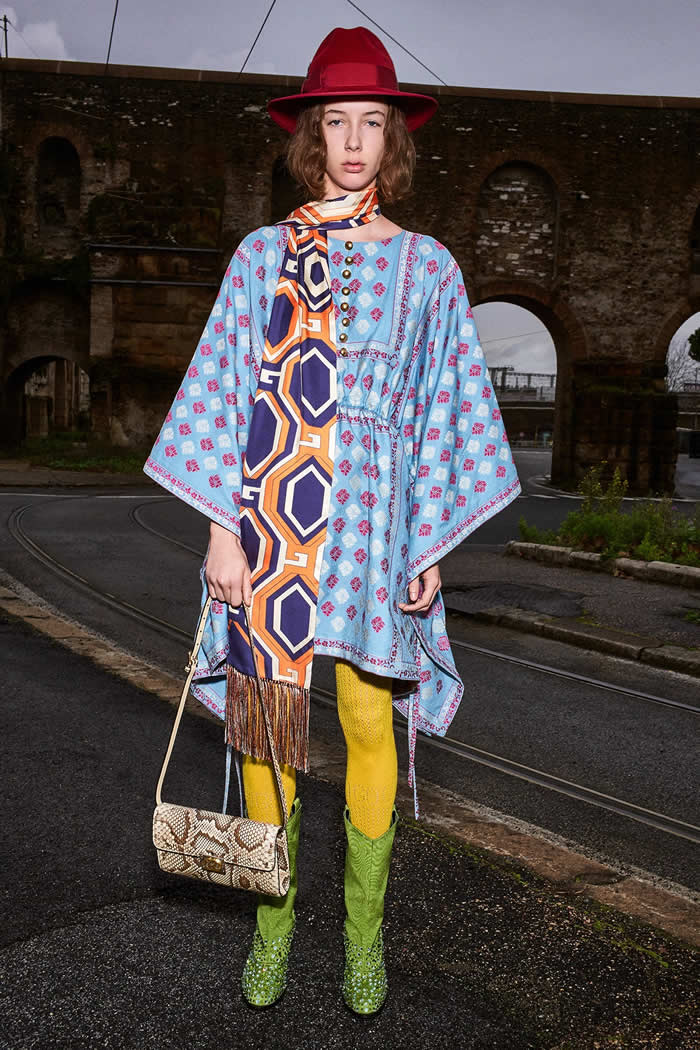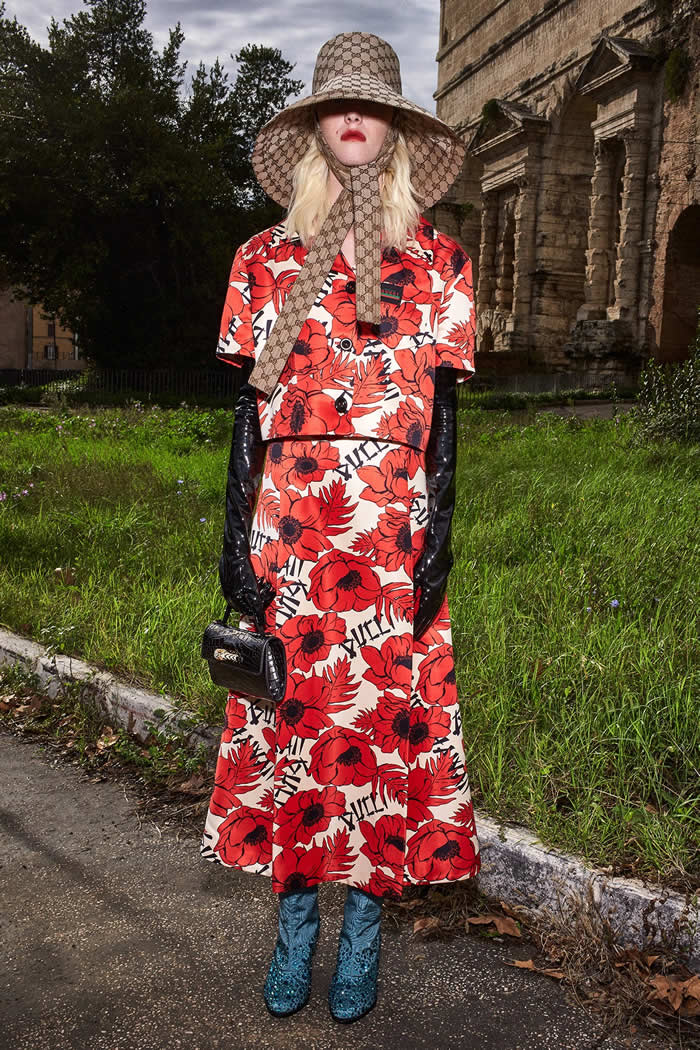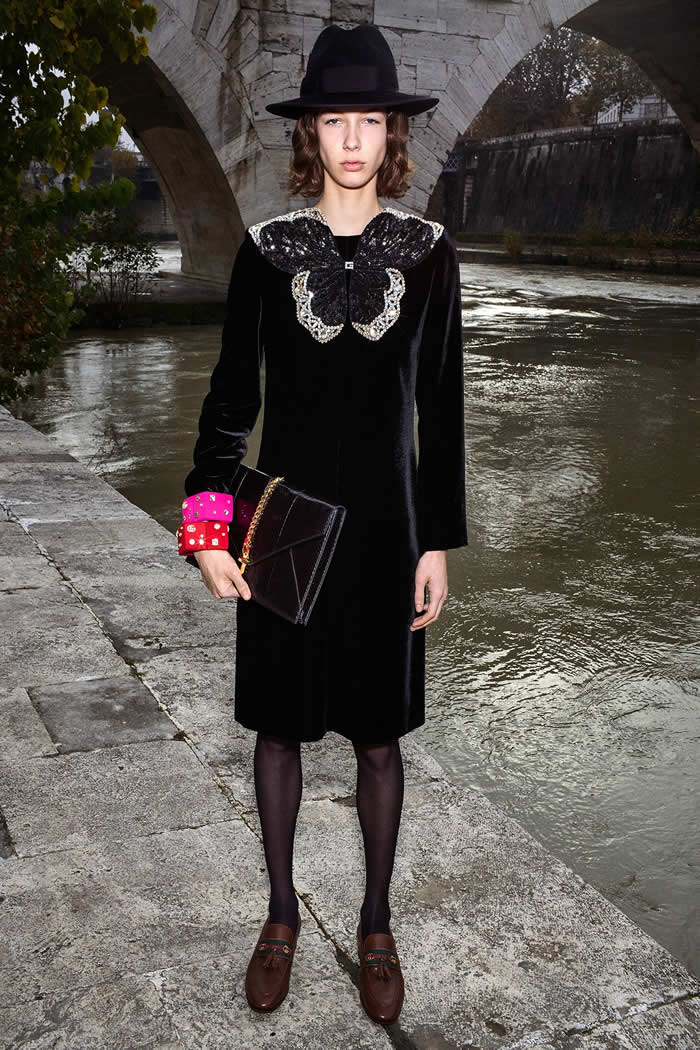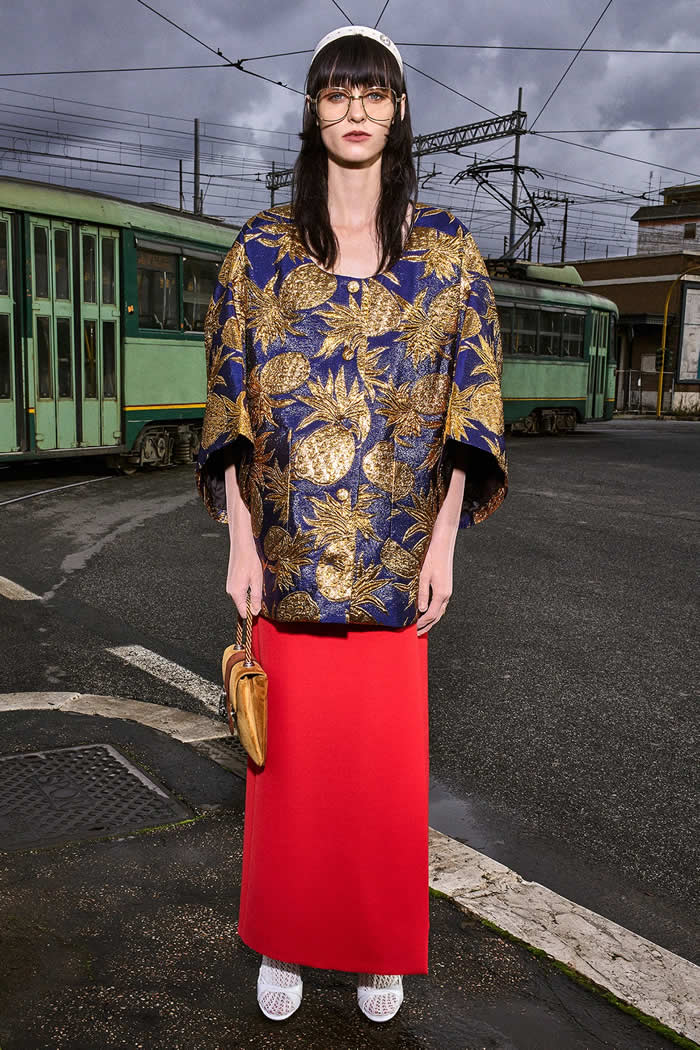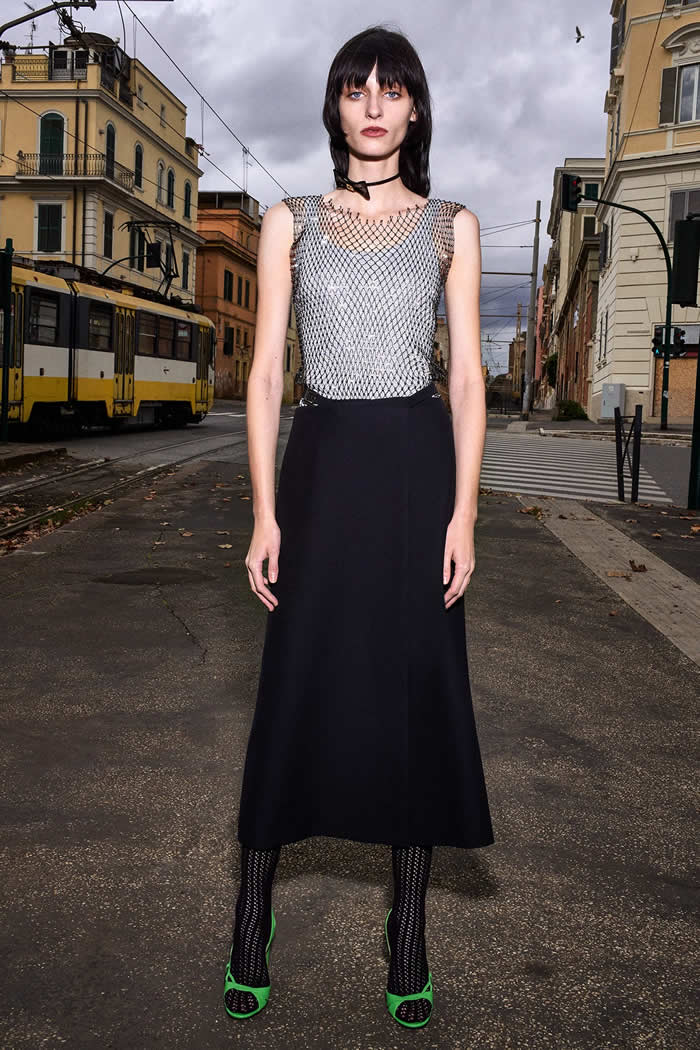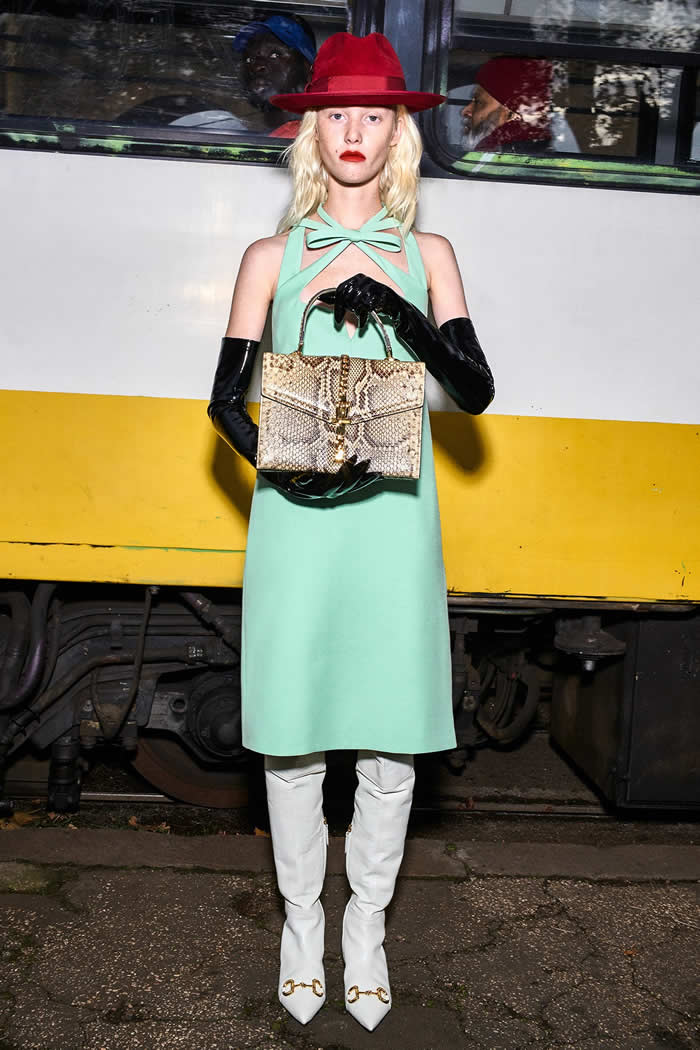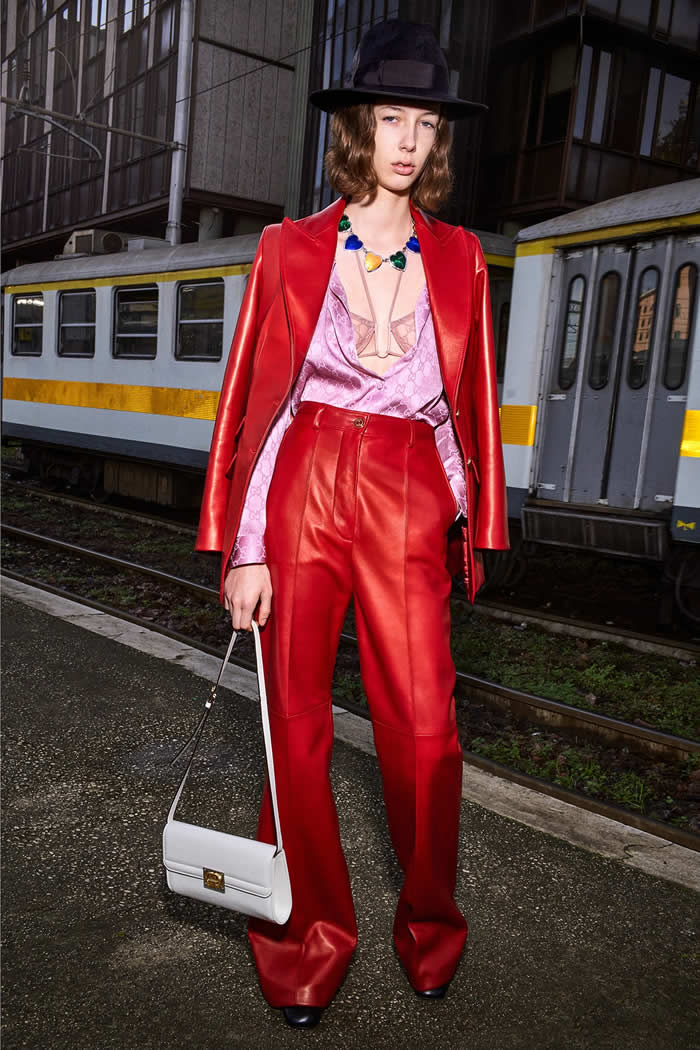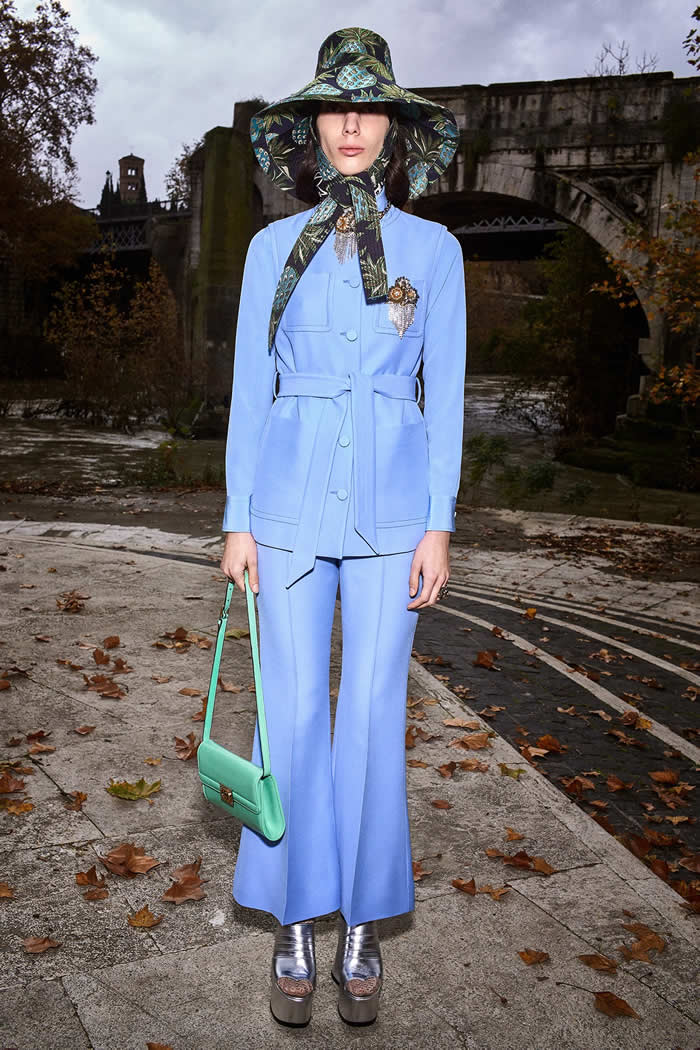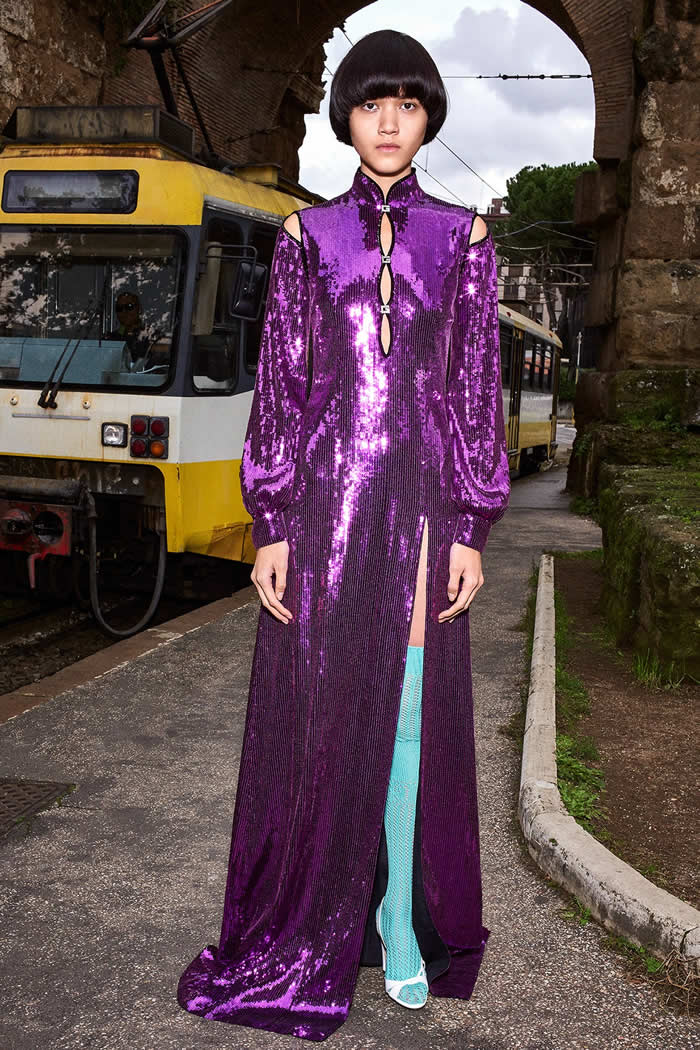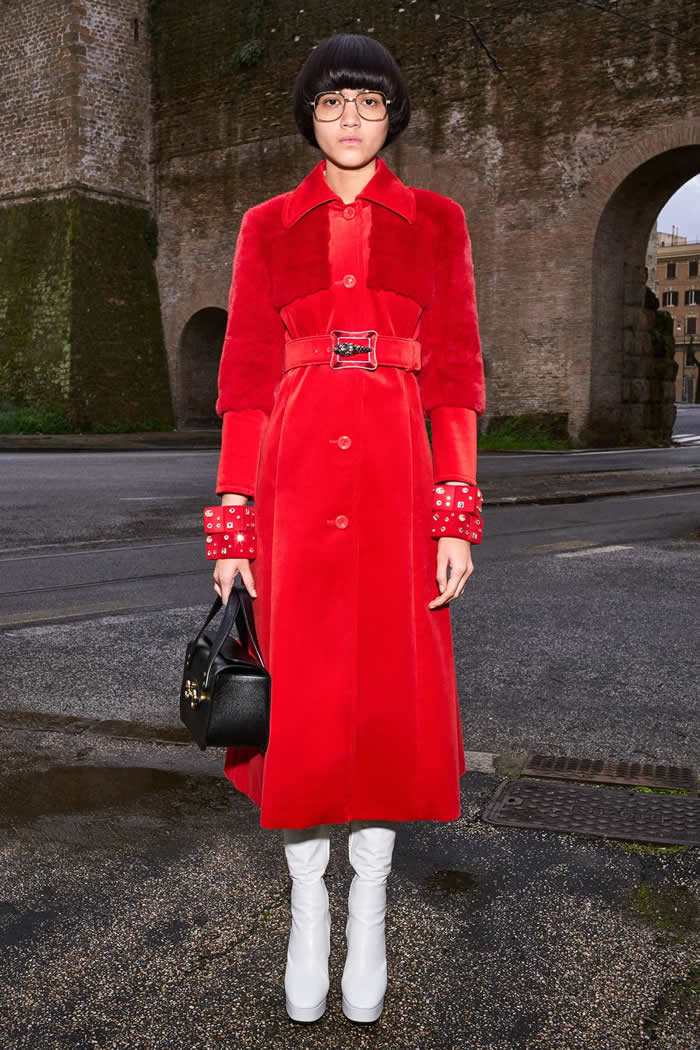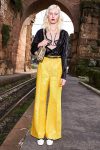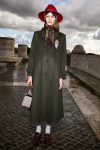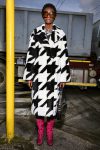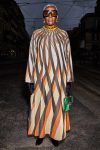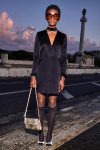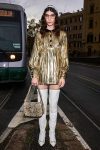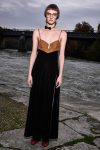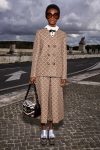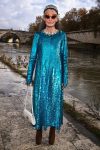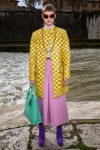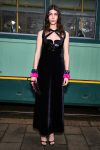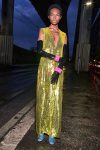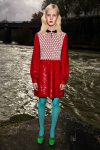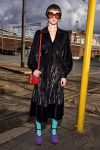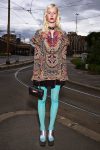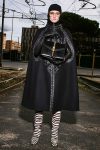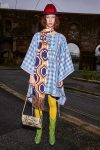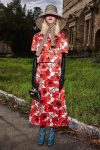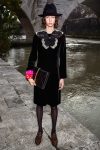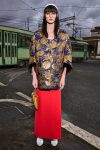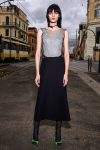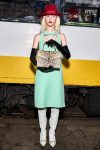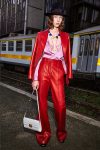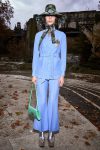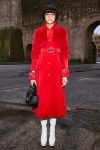At Gucci, Alessandro Michele has fully embraced the power of aesthetic provocation that clothes can convey, polishing a game-changing visual language that courts disruption as much as it validates the force of beauty at its most whimsically inclusive. Under his visionary resolve, Gucci has become a standard-bearer for the celebration of individuality, crossing and melding generations, genders, and styles in the magpie lingua franca of its narrative.
After almost five influential years at the helm of the label, Michele—as often happens with gifted visionaries—is growing and unfolding his message, adjusting and tweaking the visuals without changing the substance of the codes he has established. This new course was already fully displayed in the spring collection, where a more streamlined version of his imaginative aesthetic was presented. As usual with Michele, it caused quite a stir. But change is inherent to fashion, and controversy just fuels the conversation—and the designer is quite the provocateur. He’s good at keeping the fashion world on its toes.
The pre-fall collection read as a continuum of the vision he staged in the September show. “It tells the same story about proportion, silhouette, and, above all, the balance between shape and color,” he said via email. Balancing contrasting bearers of meaning in the same outfit has always been a virtuoso exercise for Michele. Here, he somehow simplified his game, playing it subtly but no less imaginatively. Shapes had clarity, with hints to the elegance of the ’60s (trapeze dresses in solid colors or in black with cutout décolletage; short capes calling to mind Pierre Cardin’s futuristic flair; bold floral ensembles with boxy-cut little jackets) and to the free-spirited bohemia of the ’70s (gorgeous caftans in every possible length; flowing feminine chemisier dresses; floor-grazing linen tunics with contrasting macramé appliqués or geometric motifs). Sharp masculine tailoring and a focus on construction were also prominent (monochrome sleeveless blazers; pantsuits with matching capelets in textured fabrics; square-cut double-breasted jackets paired with stiff pleated skirts).
And even if they were reduced compared to previous seasons, decoration and embellishments were still compelling, idiosyncratic ingredients in the collection. Michele’s knack for cultivated quirk crept up also in his punctuation of lingerie as a subtly sexual message —a theme he introduced in the September show. Logoed brassieres and underwire bras peeked from underneath blouses or crisscrossed open tops, worn under leather blazers. It was a gesture more evocative of an empowering attitude than of provocative sexual innuendo, underlining again the appreciation for self-determination and humanity that are among Michele’s strongest contributions to today’s cultural discourse.
To further highlight this message, the lookbook was shot in Rome, seen almost as an abstract, metaphysical De Chirico canvas through the lens of photographer Bruce Gilden. The cast of characters was as diverse as can be, including model and advocate Bethann Hardison and fashion legend Benedetta Barzini, both fabulous in their age-defying charisma and presence. “At the core [of the collection] remains the relationship between clothing and its wearer, and everything that revolves around these ‘clothed bodies,’” explained Michele. “The set and the photography not only emphasize the look but also the characters, providing a viewpoint to delve into the relationship between empty and full spaces, between clothed bodies and the space around them—and therefore between where we are and what is happening.” It’s the circle game of today’s perception: Being in the here and now but spaced out; on one’s own but always connected; all different—but all the same. Michele seems to understand that.
